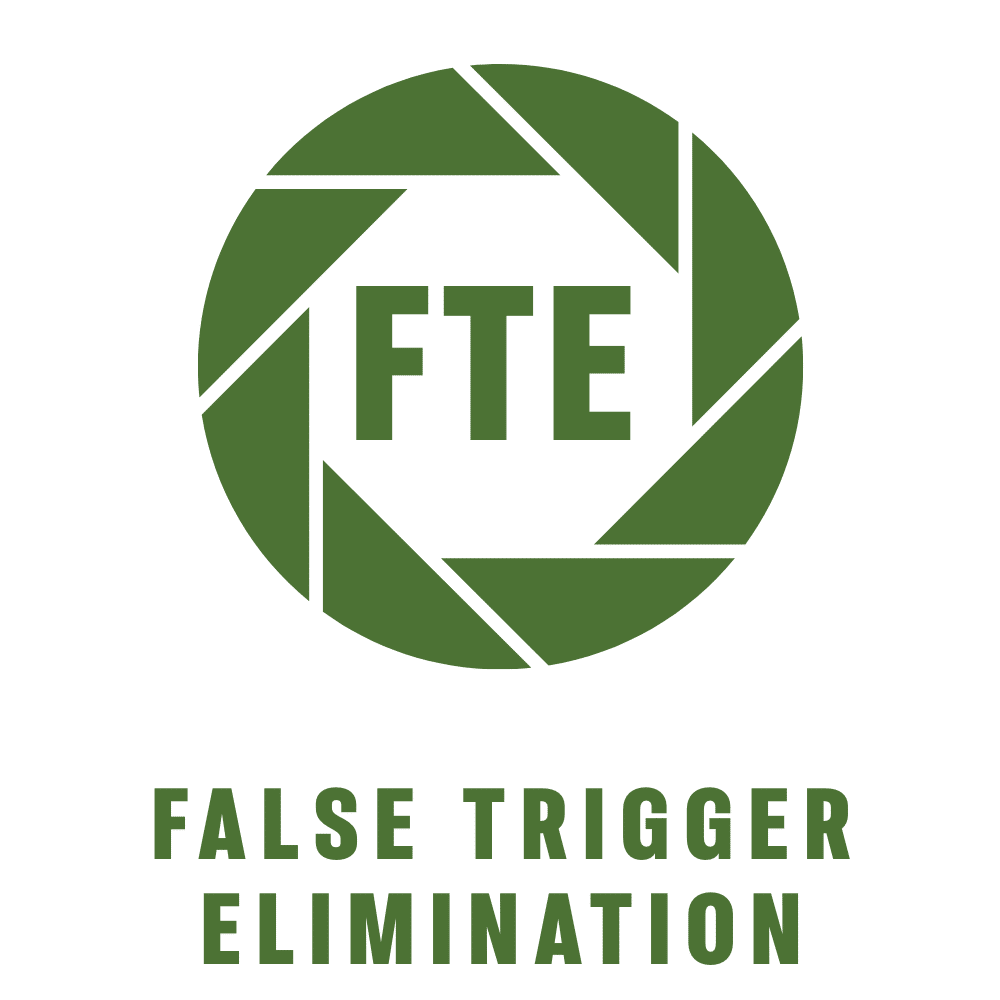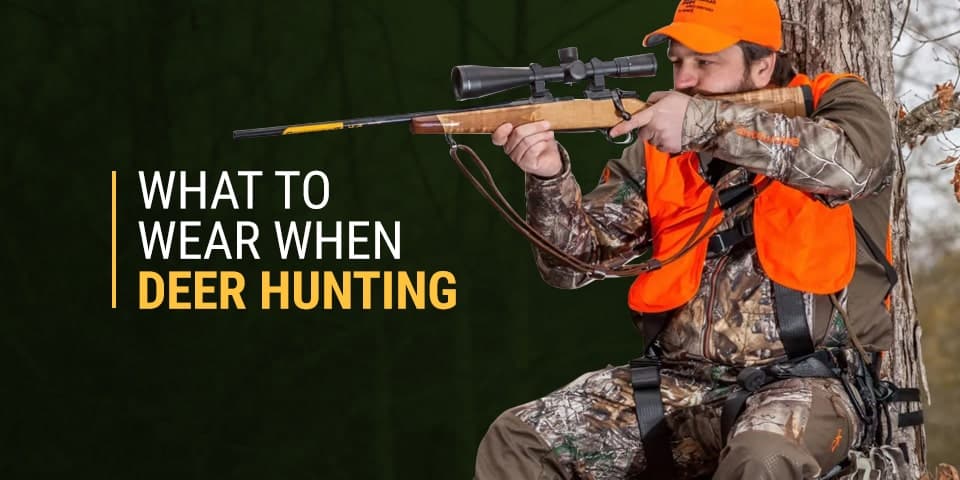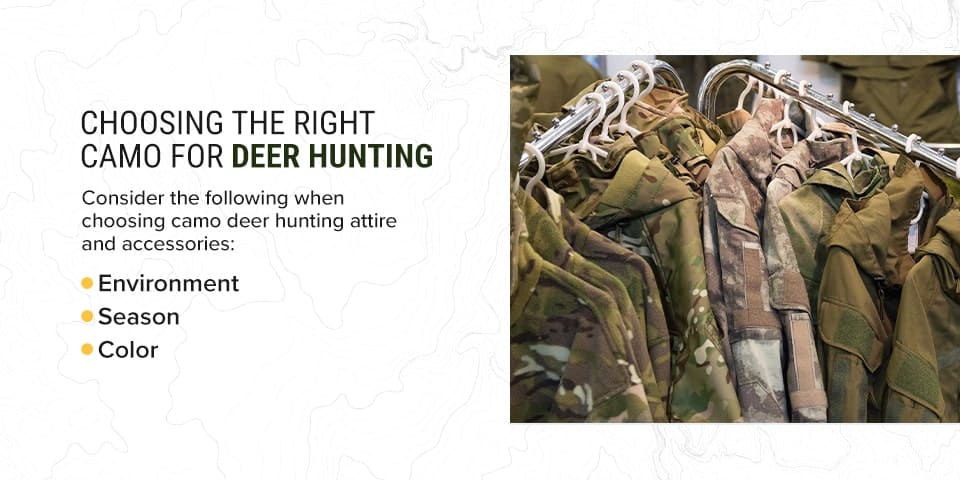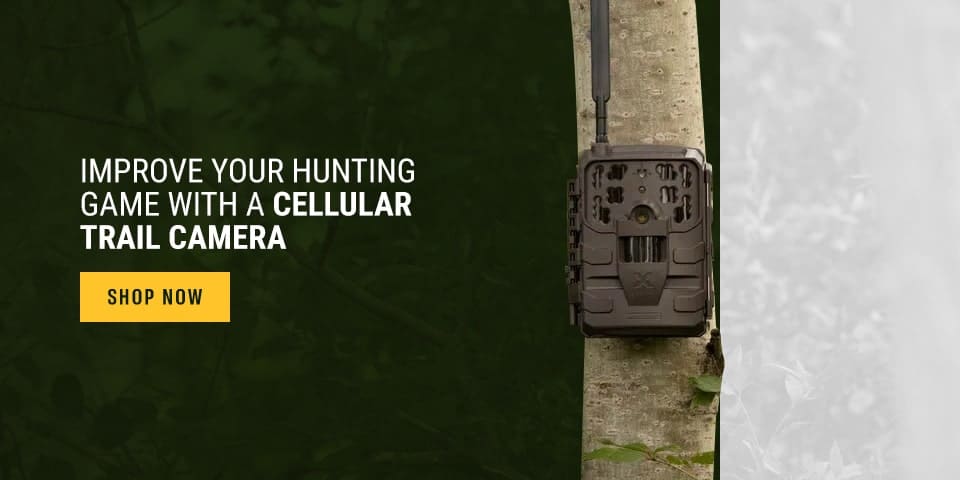What to Wear When Deer Hunting
If you’re new to deer hunting, there’s a lot to know, plan and prepare for before you head out to the woods for the first time. Successful hunting means understanding your prey, including their habits and physical traits. Everything you bring into the woods with you — your scent, gear and even your clothes — can mean the difference between making your shot and missing out on a prize buck.
What Colors Can Deer See?
The eyes of a deer are not the same as human eyes. Each animal species has its own physical makeup. Deer have fewer cones in their eyes than humans, making it impossible for them to perceive colors and light the same way we do. Their eyes also lack UV filtration, so they’re susceptible to harsh lighting. Their vision excels in low-light conditions, like early morning and just before sunset.
Deer can’t see colors like vivid orange, green and red, which is one reason why bright orange safety vests are are acceptable to wear while deer hunting. The yellow and blue color spectrums are easiest for deer to see, especially shades of blue.
Do You Need to Wear Camouflage to Deer Hunt?
The idea behind camouflage is that, if used correctly, it can help hunters better blend into their environment by breaking up their outline and appearing more natural in the field.
While certainly useful in many scenarios, camouflage clothes and gear aren’t always necessary for a hunting trip. It depends on several factors, like where are you hunting and how close to the animal do you have to be to make an ethical shot.
Hunting with a bow means you’ll have to get within 40 yards or less while standing in an open treestand or from the ground, so more camouflage is necessary to stay as invisible as possible. When hunting with a rifle from concealed brush or a blind, camouflage is less important because you can shoot out to 100 yards or more from your location. This decreases the ability of a deer seeing you.
Deer pupils are oval and horizontally shaped, giving them an excellent peripheral vision to their left and right. No matter what you’re wearing or the distance you are from your target, limiting movement is the most important thing you can do to remain undetected. After all, even the best camouflage is useless if you can’t stop fidgeting or make too much noise and scare your prey away.
Choosing the Right Camo for Deer Hunting
Consider the following when choosing camo deer hunting attire and accessories:
- Environment: Typically, your camo should match the terrain you’re hunting in. Realistic-style camo is called mimicry style, and it’s a great investment if you plan to hunt a lot in similar terrains but isn’t ideal for versatile hunting settings. Micro and macro breakup camo patterns are slightly different from mimicry camo, focusing more on blurring the hunter’s silhouette. Some extreme types of camo may be a part of a larger stationary environmental disguise, like a boulder or brush pile.
- Season: Many camouflage pieces are available with seasonal additions to further match your surroundings, like more muted autumn tones or a light snow coloring on the pattern for winter treks.
- Color: Stick to neutral-colored and earth-tone camouflage clothing and avoid colors not designed for hunting, like blue patterns and denim.
What Should You Wear While Deer Hunting?
Every part of your hunting trip should influence the clothes you wear, including the terrain you’re hunting in, the amount of shadow coverage, the temperature and weather conditions and the season.
Here’s what to wear to go deer hunting:
- Roomy layers: Fall and winter hunting requires multiple, roomy layers to create a pocket of warm air between your clothes and skin. The inner or base layer should fit tight to your skin like thermal underwear and moisture-wicking garments. The outerwear should ideally be water-resistant or waterproof and consist of heavier layers than your base layers. You might also consider a mid-layer, like a light jacket, vest or hooded sweatshirt depending on how cold it is. Outerwear colors should be camouflage or neutrals with no blue, while the inner layers don’t matter.
- Visibility gear: Depending on the hunting season and region there are hunting regulations that require wearing a hunter’s orange hat and/or vest. These highly visible accessories are usually bright orange to make it easier for other hunters to see you in the woods, even with camouflage on. Some animals, like certain birds, may be able to detect these bright colors, but deer do not. Consult your state’s game laws to learn more about your area’s rules.
- Comfortable boots: Invest in a durable, comfortable pair of warm, waterproof boots with good traction. Your boots should be in a similar neutral color as your clothes, and you should always wear outdoor hiking socks to protect your skin from chaffing and cold temperatures. Merino wool socks are a great option as are many of the blended fiber options.
- Fragrance-free body products: Wearing abnormal fragrances is a common mistake for inexperienced hunters. Animals can detect scents from miles away, and they know when something doesn’t belong. Animals on alert are harder to target and could jeopardize your entire hunting trip. Use fragrance-free deodorant and soap and avoid body sprays or colognes before heading out. Consider picking up specialized hunting spray that helps further neutralize your scent.
- Warm accessories: Bring weather-appropriate accessories, like gloves, hand warmers, hats, a face mask, and ear warmers in similar neutral, camo, or earthy shades.
Because deer are see in the UV spectrum, do not use laundry detergents and additives infused with UV brighteners.
Improve Your Hunting Game With a Cellular Trail Camera
Moultrie Mobile cellular trail cameras offer an all-in-one, easy-to-use system with a helpful smartphone app for quick image retrieval and free unlimited cloud storage for all your trail pictures. Our cellular trail cams mean you’re no longer bound to WiFi signals or physical memory cards that take time to retrieve manually. Pictures are available straight from our app, which pairs with all our cameras.
Moultrie Mobile trail cameras are available in low glow and no glow flash options so you can find the ideal model for your game and terrain. Learn more about Moultrie Mobile and start improving your hunting game today.
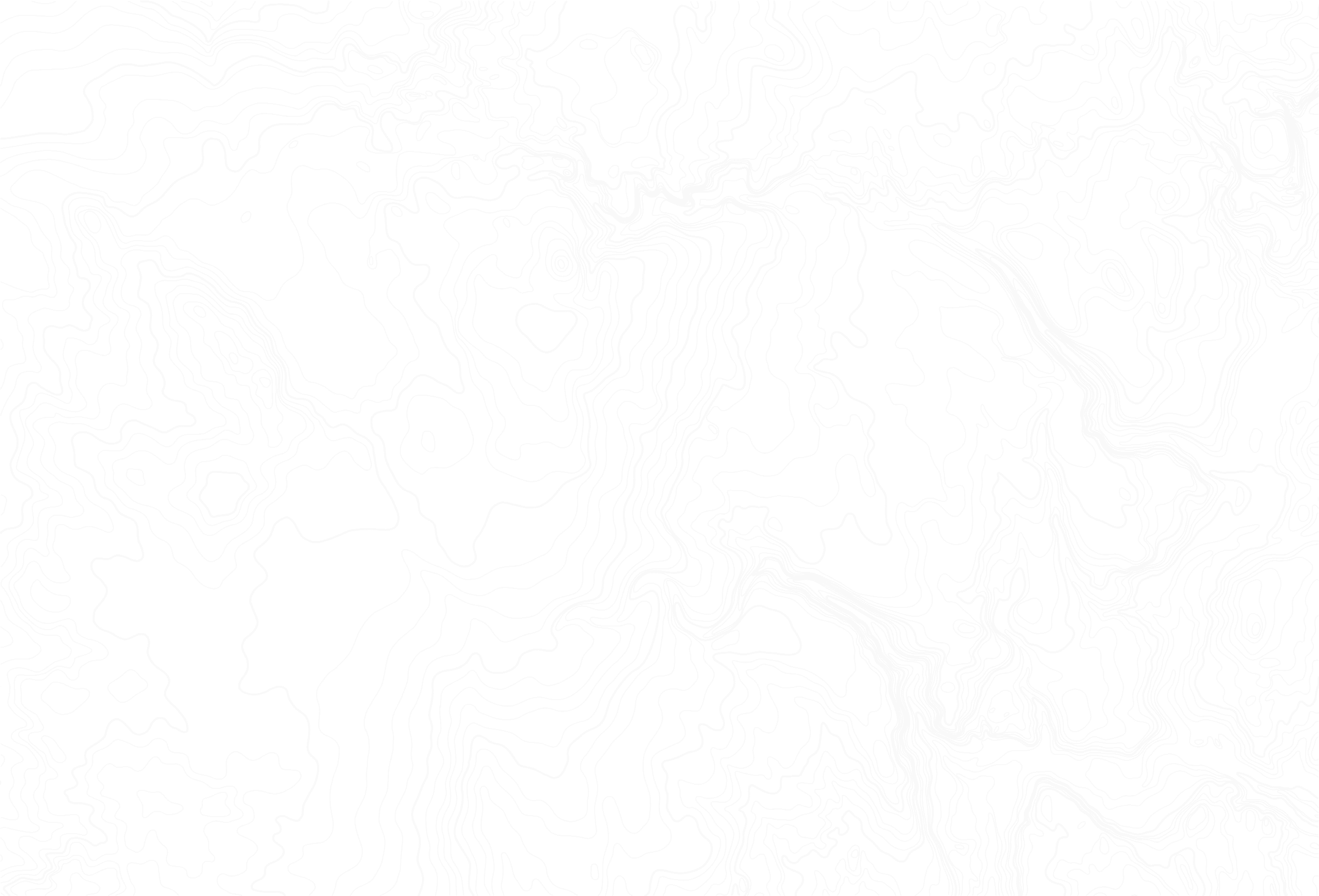

Featured
Juicy homemade jalapeno cheddar brats are perfect for grilling all summer long. They’re packed with all the right seasonings and fresh ingredients, making them extra tasty.

Featured
MeatEater and Moultrie Mobile join teams to bring hunters closer to nature.

Featured
These wild turkey skewers are tender and smothered in a homemade teriyaki glaze. Wild turkey sometimes gets a bad reputation for being a tough meat but when prepared properly using the steps in this recipe, the results are amazing.

